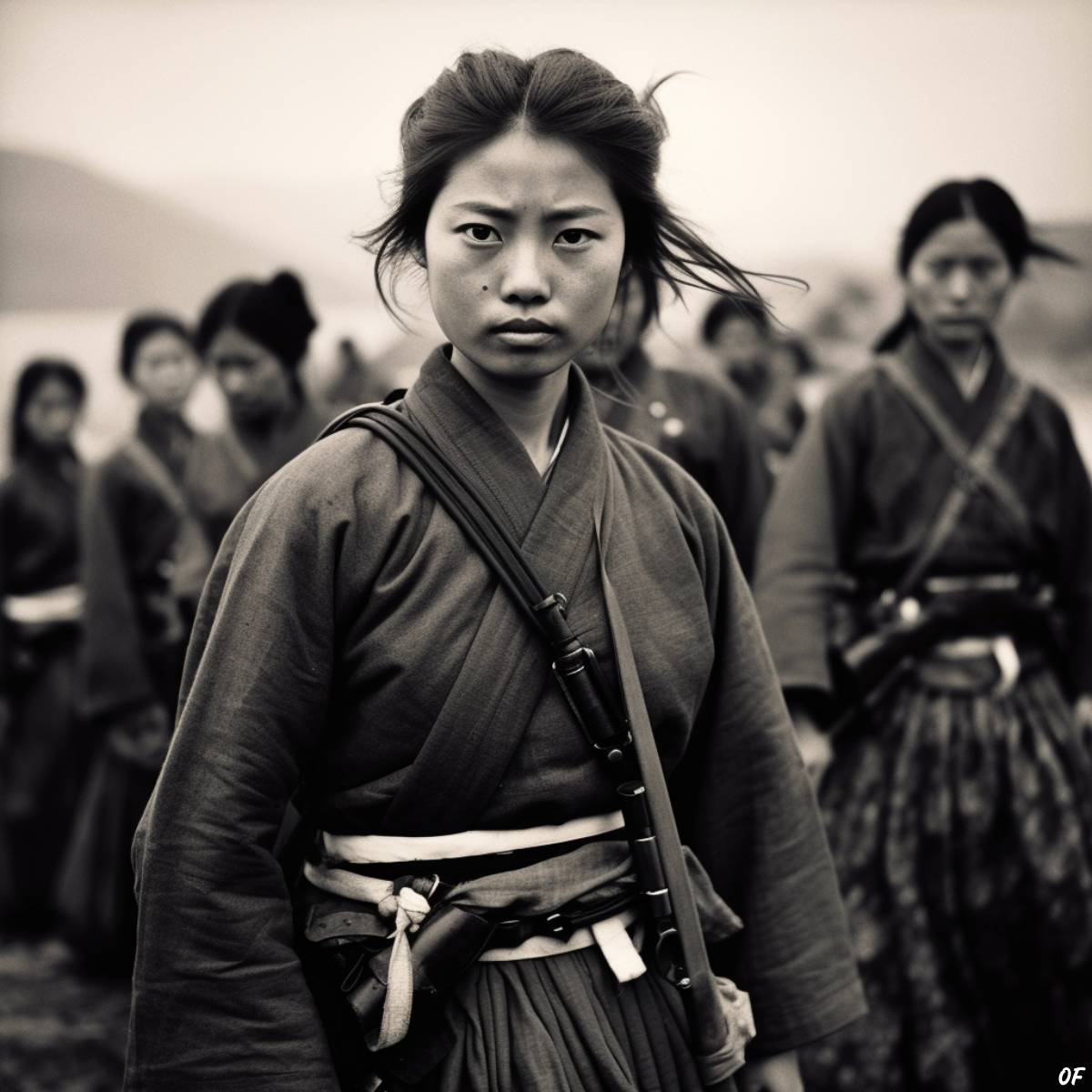The iron rule maintained by the Tokugawa shogunate, the feudal Japanese military government during the Edo period, remained virtually unchallenged for two and a half centuries (1603 – 1868), with only a few disturbances of any significance. The last one of these was the Shimabara Rebellion of 1638, a significant event which could trace its origins at least back to September 1589, when government-backed daimyōs (feudal lords) Konishi Yukinaga and Katō Kiyomasa initiated a campaign against a few unruly landowners of the Amakusa Islands.
Luís Fróis, a Portuguese Jesuit missionary in Asia, was nearby when the ruling forces stormed the largely Christian fortress of Hondo. Just before the castle’s ultimate downfall, he bore witness to a truly remarkable sight: some 300 women warriors making a final, resolute stand, after having collectively cut their hair and carefully adjusted the hems of their kimonos so they could “fight without any hindrance.”
Some of these young women donned armor, others fastened swords at their waists, and a few wielded spears; all the while, they proudly showcased rosaries and reliquaries hanging from their necks. Only two—both of them severely injured—lived to tell the tale. An inscription left by their enemies poignantly sums it up: “The warriors of Hondo were not men: they were women and children. Yet, the men who were fighting were surpassed by the dauntless courage of these warriors.”
The male samurai and their wives: meet the samurai class of Japan
In the words of Pamela D. Toler, authoress of Women Warriors: An Unexpected History, “In medieval Japan, samurai was a class distinction, not a job description. Women who were born into the samurai class [the hereditary military aristocracy] were samurai, whether or not they were warriors.” In other words—and strictly speaking—the count of female samurai in Japanese history roughly matches that of their male counterparts; yet, among them, only a minority assumed the role of female warriors.
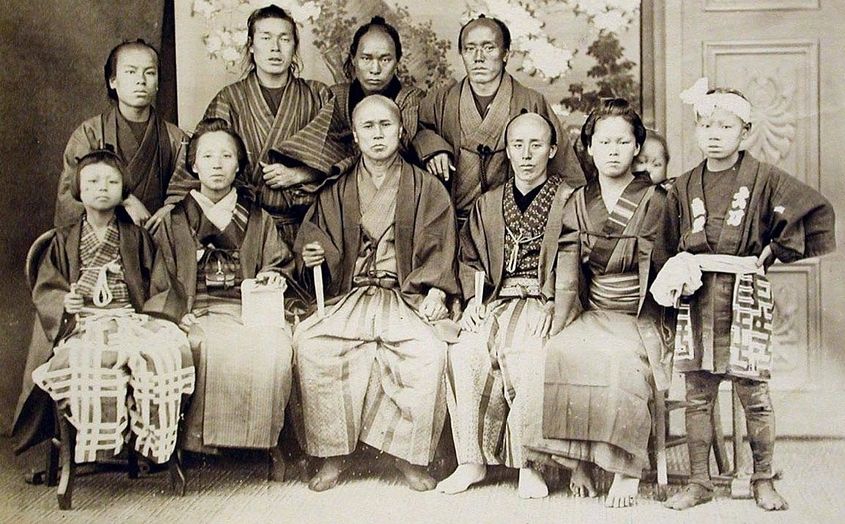
As attested by numerous chronicles, diaries, and gunki monogatari (epic warrior tales), the male samurai class played an important, multifaceted role in Japanese society, serving as protectors, administrators, and enforcers of law and order. Their disciplined lifestyle, Bushido code of conduct, and dedication to their feudal lords (daimyōs) established them as a symbol of honor and loyalty, shaping the cultural and historical landscape of Japan for centuries.
Conversely, the story of the samurai’s wives and daughters remains largely untold, their roles inevitably obscured by the shadows of their husbands’ or fathers’ endeavors. Historical depictions have regrettably confined Japanese women to roles of mere “pawns in the marriage game, negotiators or go-betweens,” as British historian Stephen Turnbull points out in Samurai Women 1184-1877, a standard work of reference. However, beneath this surface portrayal lies a rich tapestry of complexity and resilience. To quote Turnbull:
Over a period of eight centuries, female samurai warriors are to be found on battlefields, warships and the walls of defended castles. […] Some were motivated by religious belief, others by politics, but all fought beside their menfolk with a determination and bravery that belied their gender; and, when the ultimate sacrifice was called for, they went willingly to their deaths as bravely as any male samurai. Some women achieved fame by employing their skills in the martial arts to seek revenge for a murdered relative; others sought mere survival; and, when combined with the exploits of women whose role in warfare was of a more indirect nature, the female contribution to samurai history is revealed to be considerable.
Guardians of the garrisons: the role of samurai women during stronghold sieges
The majority of samurai women whose presence is documented in the written records of Japan’s lengthy periods of internal conflict are associated with sieges rather than direct battlefield engagements. However, unlike the 300 of Hondo—if Sparta had them, why shouldn’t Japan too?—these women adhered to the conventional duties expected of them in stronghold defense: cooking, tending to the injured, loading firearms, preparing ammunition, extinguishing fires ignited by enemy cannons, dropping rocks against enemy forces, and—yes!—getting trophy heads ready for display.
Providing a vivid account, Oan, daughter of famed samurai Yamada Kiyoreki, delves into some curious detail as she recounts the siege of Ogaki Castle in Mino Province during the decisive Battle of Sekigahara in October 1600, the largest and most important in Japanese feudal history:
We—and mother, and the other women and girls—took to busying ourselves casting ballets in the look-out turret. And then, too, our soldiers would bring to us in the turret the heads they had taken, and make us label them for reference. They would also often ask us to blacken the teeth with powder, the reason being, you see, that in the old days ‘tooth powder heads’ were those of men of rank, and therefore more prized, so that a soldier would bring you a plain head and ask to do him a good turn by giving the teeth a rub of powder. We weren’t a bit afraid of the heads, and used to sleep in the midst of the nasty smell of blood that came from them.
Though uncommon, historical records suggest that even young Japanese women, such as Oan, may have been highly skilled in much more than trophy head preparation (and other quotidian household matters)—they were also ready to defend when needed. The 300 of Hondo weren’t the only ones who took up weapons and led castle defense! Almost as a general rule, when male samurai were away during a siege, their wives had to step up, handling both administrative duties and combat against enemies. The ad hoc nature of these events hints that samurai class women, much like their male counterparts, received martial arts training from early childhood, ensuring they were ready for the direst of situations.
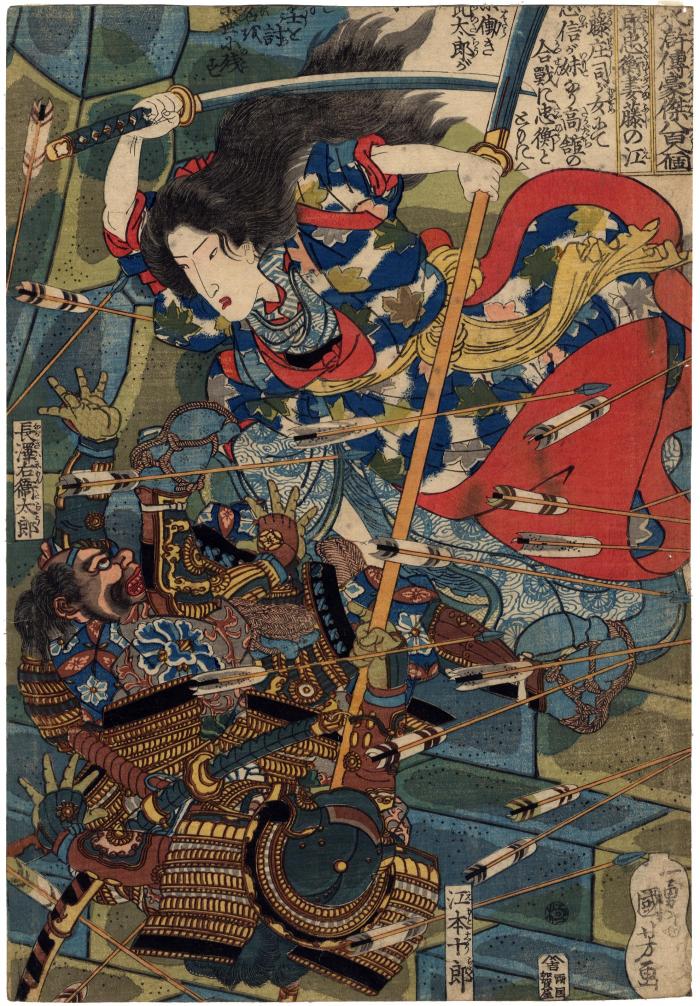
summer grasses
the dreams of brave warriors
the traces
Trailblazing female samurai warriors in the Genpei War
Fujinoye’s existence may be shrouded in myth, but even so she occupies a significant place among the many legendary samurai women who have immortalized themselves as onna-bugeisha (meaning, “female martial arts masters”) or onna-musha (“women fighters“). One might even contend that, alongside Tomoe Gozen and Hangaku Gozen, Fujinoye forms the Holy Trinity of fabled Japanese female warriors—in both sense of that adjective.
All three of these women made their name during the Genpei War, a pivotal conflict in Japanese history that took place at the end of the 12th century. Essentially a power struggle for supremacy between two influential samurai clans, the Minamoto (also known as Genji) and the Taira (also known as Heike), the Genpei War was immortalized in many contemporary artworks, the most famous among these being Heike monogatari, an Iliad-like epic of rival clans, samurai honor, and dramatic battles.
The victory of the Minamoto clan paved the way for the establishment of the Kamakura Shogunate. This marked a significant transformation in Japan’s social and political landscape, with Minamoto no Yoritomo assuming the role of the country’s inaugural shōgun in 1192—essentially a military dictator acting on behalf of a symbolic emperor. For the next six centuries, the shogunate system would dominate Japan’s governance.
Tomoe Gozen, the archetypal samurai woman
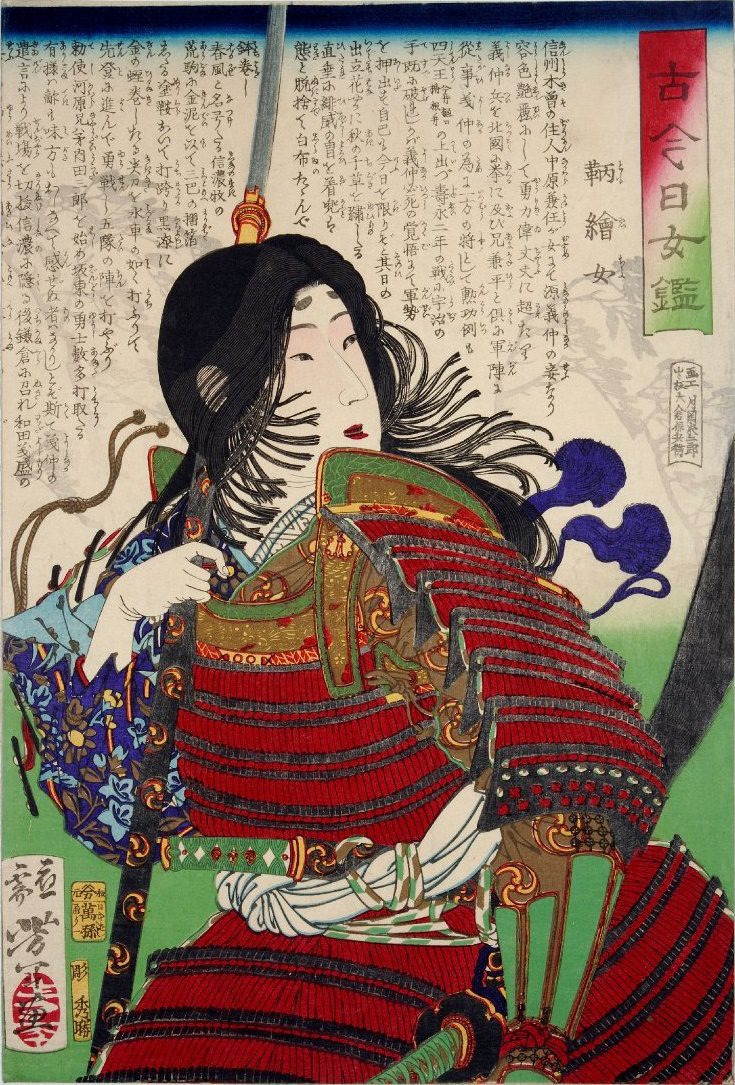
Even before the Minamoto could secure their victory against the Taira in the Genpei War, an internal conflict emerged within the clan in the quest for control over its fate. The dispute positioned the future shogun, Yoritomo, and his half-brother, Yoshitsune, on one side, while pitted against them was their cousin, Minamoto (Kiso) no Yoshinaka and his female companion, Tomoe Gozen.
Even among the legendary samurai women of Japan, Tomoe Gozen (that is, Lady Gozen) stands out as an iconic figure. Revered as perhaps the most famous onna-bugeisha in history, she epitomizes the essence of the female samurai: a formidable blend of beauty, courage, skill, and fearless devotion on the battlefield.
Tomoe is said to have once led 300 female samurai into a fierce battle against 2,000 Taira soldiers, emerging as one of the few to survive. Her exceptional courage earned her the honor of commanding a battalion of 3,000 male samurai. Notably, she was one of the last soldiers to stand beside Kiso Yoshinaka in his final battle at Awazu in 1184. The fourth chapter of the ninth book of Heike monogatari vividly captures this event:
Tomoe had long black hair and a fair complexion, and her face was very lovely; moreover she was a fearless rider whom neither the fiercest horse nor the roughest ground could dismay, and so dexterously did she handle sword and bow that she was a match for a thousand warriors, and fit to meet either god or devil. Many times had she taken the field, armed at all points, and won matchless renown in encounters with the bravest captains, and so in this last fight, when all the others had been slain or fled, among the last seven there rode Tomoe.
Tomoe’s life took a turn for the worse after surviving the Battle at Awazu. She was captured by a high-ranking official named Wada Yoshimori, who later took her as his concubine. During their time together, she gave birth to a son, the celebrated samurai Asahina Saburo Yoshihide. In the later years, Tomoe chose a different path, becoming a nun, and she lived a quiet life, passing away at the venerable age of 91.
Hangaku Gozen, a rebel with a cause
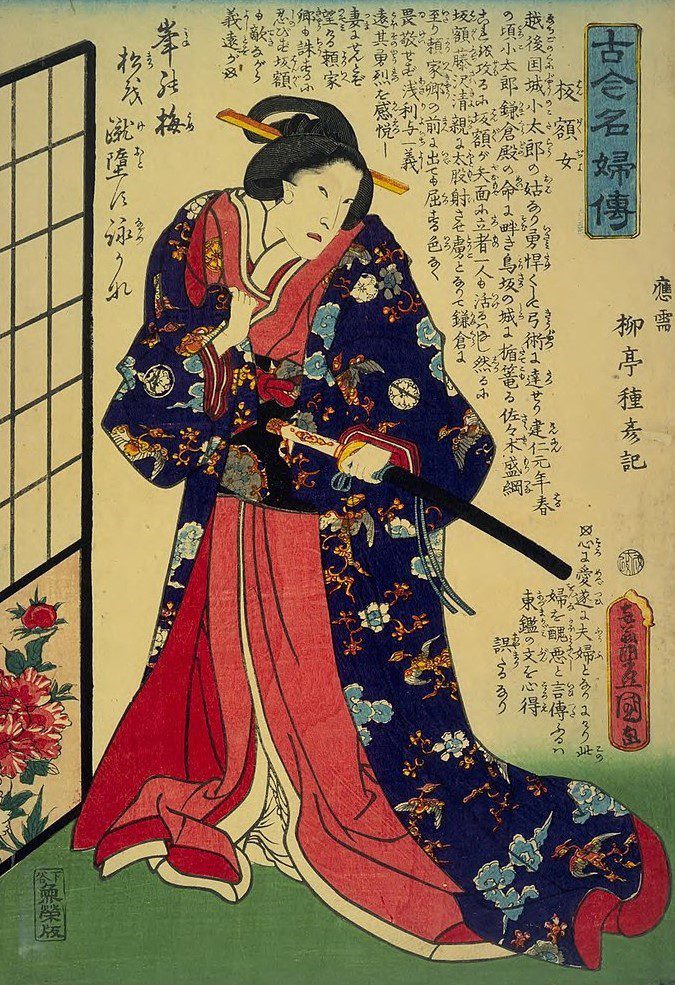
Hangaku Gozen stood as Tomoe Gozen’s striking antithesis in almost every aspect, except for one: her prowess as a great female samurai warrior. Hailing from the Jō family, which fought alongside the Taira clan, Hangaku found herself on the losing side during the Genpei War. The conflict brought not only defeat to her family but also claimed her father, Jō Sukenaga, at the hands of none other than Kiso Yoshinaka, in a 1182 battle in which Tomoe Gozen might have also participated.
Following Minamoto no Yoritomo’s ascent as Japan’s inaugural shogun, the Jō family received clemency. However, upon Yoritomo’s passing, the family’s new leader, Jō Nagamochi, perceived an opportunity for revenge amid the internal conflicts within the Shogunate. Thus began the Kennin Rebellion, on the first day of the 13th century, when Nagamochi, joined by Hangaku and her brother Sukemori, launched an assault on the residence of a Minamoto official.
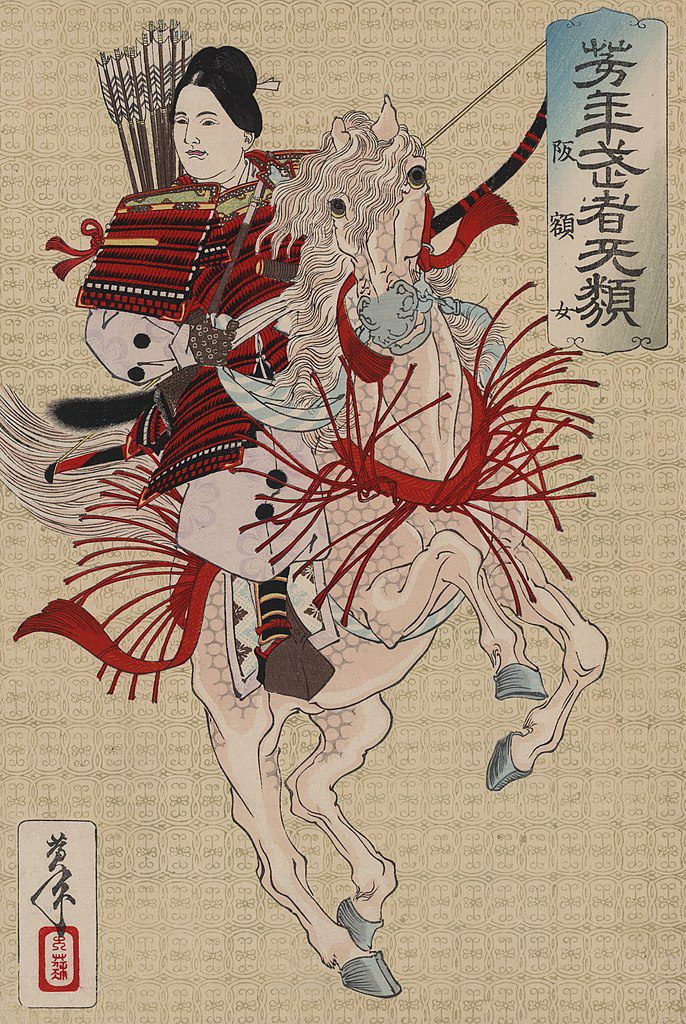
The attack didn’t go according to plan, prompting a retaliatory strike by the Shogunate forces. In a decisive turn, they overwhelmed Nagamochi’s troops, leading to his demise. Sukemori and Hangaku sought refuge within the confines of their Torisaka Castle; here, they made their last stand against the Shogunate’s formidable armies. Despite the modest nature of 13th-century Japanese fortresses—”little more than elaborate wooden stockades,” according to Stephen Turnbull—Hangaku Gozen held off the attackers for nearly three months, leading and inspiring her garrison from the top of a tower. In fact, it was only when she sustained an arrow wound that the rebels ultimately surrendered.
Ever the foil to Tomoe, rather than being enshrined in poetic legend, Hangaku’s legacy resides on the pages of a prosaic chronicle titled Azuma Kagami (The Mirror of the East). This historical account reveals that after her capture, the enemy soldiers were so moved by her bravery that they chose to spare her life. Asari Yoshito, in particular, requested permission from the shogun to marry Hangaku, “on account of her great courage” and “in spite of her ugliness”: even in terms of physical appearance, Hangaku stood as Tomoe’s polar opposite. Later accounts suggest that she bore her husband a child, but scant information exists regarding her life beyond this point.
Challenging stereotypes and written history
Rarely attested in pre-modern literature, the term “bushido” gained prominence through the publication of Bushido: The Soul of Japan (1899), a highly influential work by Japanese diplomat and educator Nitobe Inazō. In it, Nitobe articulated an idealized and romanticized vision of the samurai code, highlighting chivalric values such as loyalty, honor, and self-discipline. Of samurai women warriors he didn’t have a lot to say but—contrary to even serious studies—what he said about samurai women was neither inaccurate nor in the service of some newly patriarchized, post-Shogunate ideology.
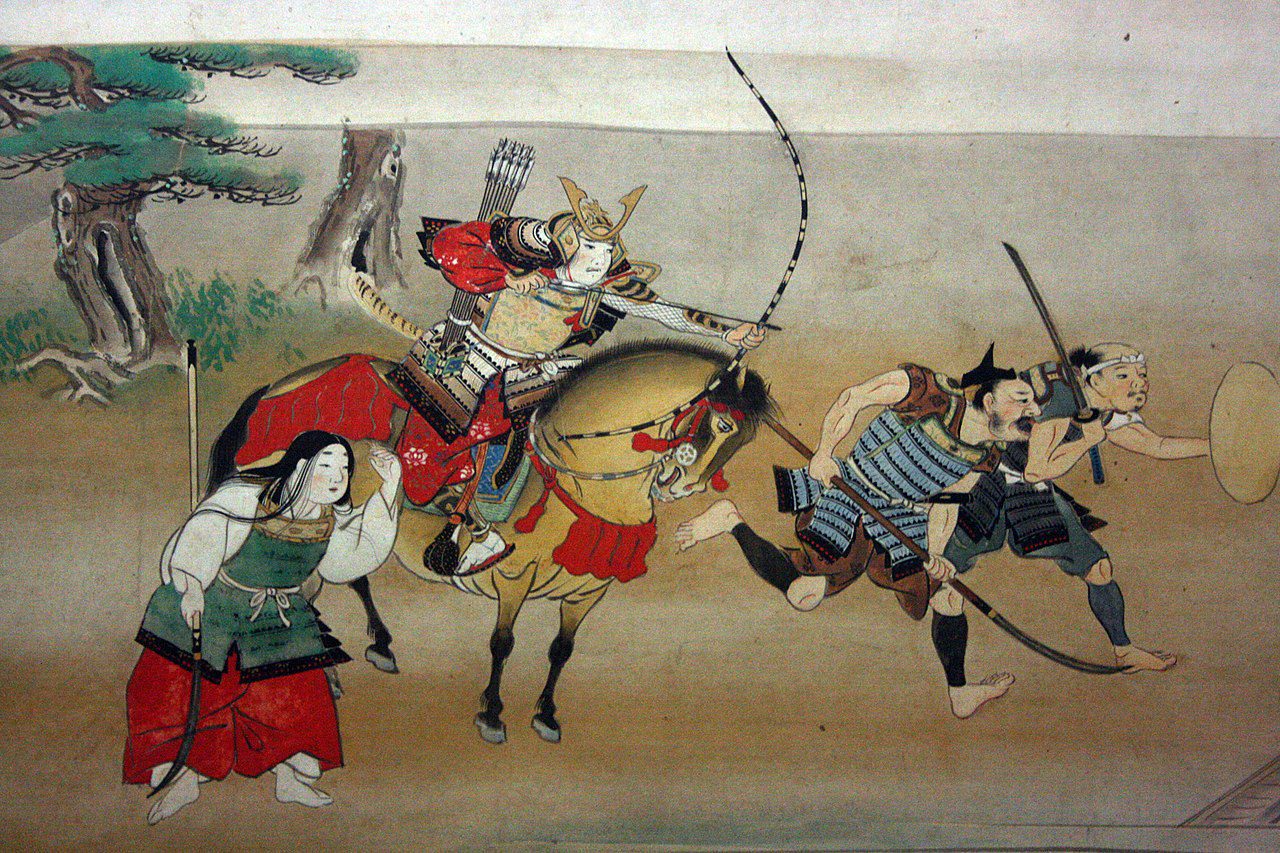
Unfortunately—much like in the West—Japanese women endured subpar treatment for most of history, often confined to the role of child bearers and mothers. Even in the most imaginative scenarios, the presence of a woman warrior on the battlefield was likely exceptional rather than commonplace. Moreover, when there was one, the highest compliment they could get, apparently, was being compared to a man. Writes Nitobe,
Bushido being a teaching primarily intended for the masculine sex, the virtues it prized in woman were naturally far from being distinctly feminine. […] Bushido praised those women most “who emancipated themselves from the frailty of their sex and displayed an heroic fortitude worthy of the strongest and the bravest of men.” Young girls therefore, were trained to repress their feelings, to indurate their nerves, to manipulate weapons,—especially the long-handled sword called naginata, so as to be able to hold their own against unexpected odds. Yet the primary motive for exercises of this martial character was not for use in the field; it was twofold—personal and domestic. Woman owning no suzerain of her own, formed her own bodyguard. With her weapon she guarded her personal sanctity with as much zeal as her husband did his master’s. The domestic utility of her warlike training was in the education of her sons.
Even so, says Turnbull a century later, “the archaeological evidence, meagre though it is, tantalizingly suggests a wider female involvement in battle than is implied by written accounts alone.” Case in point, a 1989 study published in the Journal of the Anthropological Society of Nippon, revealed—based on the examination of temporal bones—that as much as one-third of the 105 skeletons interred at a 16th-century battle site, could belong to women. To make matters even more interesting, this wasn’t a siege situation, but a full-fledged military confrontation. Sadly, we know not one of the names of the 35 women who perished at the battle of Senbon Matsubara in 1580. In fact, we barely know as many female samurai names altogether, in the entire history of Japan. Let us remember the few that we do.
Remember them, the onna-musha, the women warriors of Japan
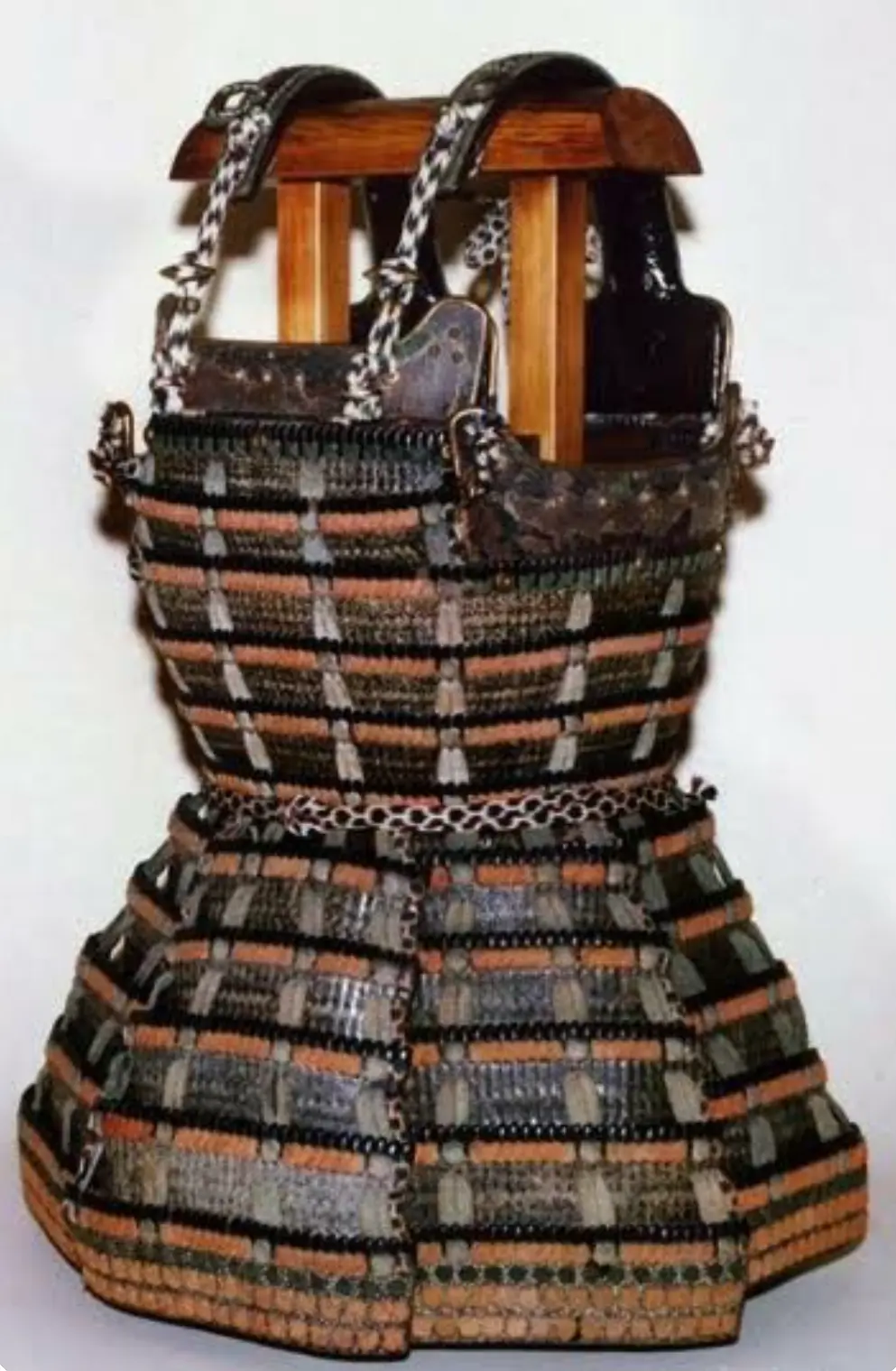
Let us remember Tsuruhime of Omishima, the “Joan of Arc of Japan,” who, in the year 1541, stood resolute against the encroaching Ouchi forces from the mainland, defending her island homeland with unmatched valor. Born in 1526, she inherited her sacred duty as the chief priestess of the Oyamazumi Shrine at the age of 16, and just a year later, proclaimed herself the earthly vessel of the Mishima Myojin, the shrine’s powerful deity. With unwavering faith in her divine inspiration and her martial skills honed since childhood, Tsuruhime took charge of the military resistance, leading her troops into battle, and challenging the Ouchi general, Obara Nakatsukasa no jo, to single combat. When he scoffed her offer off, she fearlessly climbed aboard his ship and cut him down with a “bear paw” rake, driving the confounded Ouchi fleet back into the sea.
Let us remember Ueno Tsuruhime as well who, during the siege of Tsuneyama Castle of 1577, led a group of 33 women in a suicidal charge against the besieging forces, craving a noble death on the battlefield over the traditional ritual of seppuku. When the enemy warriors refused to fight back and grant them the honor, the disappointed Tsuruhime withdrew herself and her fellow defenders to the castle. There, the 33 women recited their final prayers, took hold of their swords and, with stiff-upper-lip fortitude, ended their lives by simultaneously plunging themselves onto the sharp blades.
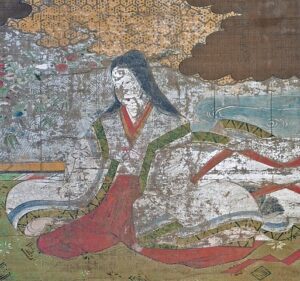
In the tumultuous days of 1586, let us honor Myorin-ni, the widow of Yoshioka Shigeoki who, after the death of her husband, bravely defended Tsurusaki Castle during the Shimazu invasion. She steadfastly refused to surrender, leading her garrison with unwavering vigor and determination, and sustaining a deep arrow wound during the fierce fighting. Her actions bought precious time for Toyotomi Hideyoshi’s forces, ultimately leading to the defeat of Shimazu and the great invasion of Kyūshū, a turning point in Japanese feudal history.
And in the turbulent years between the death of Hideyoshi, the second “Great Unifier” of Japan, and the birth of the Tokuganawa shogunate, when the fate of the country hung in the balance, let us honor the female defenders of Omori Castle, who used makeshift catapults to defend against the firing arquebuses of a warring landlord’s army in 1599; and Ginchiyo too, “the warrior nun” of Yanagawa, who, in an act of surprising loyalty to her ex-husband Tachibana Muneshige, organized her fellow Buddhist nuns in armed resistance against the besieging forces of Katō Kiyomasa just a year later.
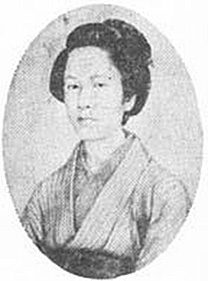
And finally, let us remember the Japanese Civil War of 1868-9 and the celebrated Battle of Aizu, the shogunate’s last stand amid the transformative tide of the Meiji Restoration, where the bravery of women warriors shone the brightest. Among them stood Nakano Takeko, a fearless 21-year-old girl who led an impromptu battalion of female samurai, called the Jōshigun, in a courageous charge against the imperial army’s modern rifles. Takeko, contemporary sources say, “with her tied-back hair, trousers, and steely eyes, radiated an intense male spirit and engaged the enemy troops, killing five or six with her naginata.” She fell in the end, a burning bullet to her chest, but her sister Masako, unwavering in her devotion, ensured that Takeko’s honor remained intact, preventing her head from becoming a gruesome war trophy.
In the face of adversity, the women warriors of Aizu displayed unparalleled valor and dedication. Their stories, like those of the valiant sea princess Tsuruhime and the inspiring warrior nun Ginchiyo, and those of Tomoe and Hangaku from centuries past, remind us of the indomitable spirit and bravery that transcend time and gender, leaving an enduring mark on the vibrant tapestry of Japan’s storied history. In reverence and awe for their bravery and defiance, we offer this humble tribute, a reverent mention or two, a heartfelt paragraph of remembrance. May their spirits find eternal peace, and may their legacies continue to inspire courage and determination in all who hear their stories. Amen.

